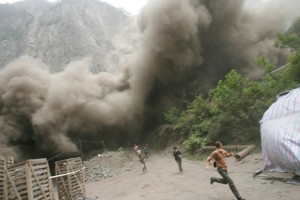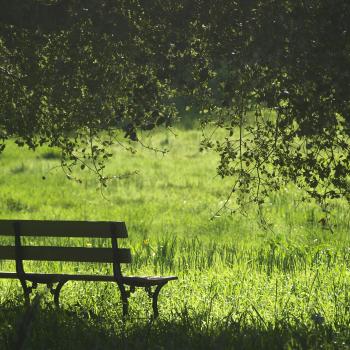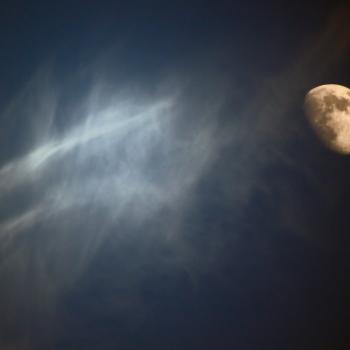 For a young woman beset with all manner of insecurities, the early nineties in southern California were the perfect storm. Or fire. Or fault.
For a young woman beset with all manner of insecurities, the early nineties in southern California were the perfect storm. Or fire. Or fault.
During my college years at the University of California, Riverside, I often felt my center could not hold. But because I didn’t know how to deal with the center, I focused on everything outside it—the more explosive, the better: Desert Storm, the LA Riots, fires, and, of course, earthquakes.
I walked dutifully to class amidst yelling protestors and swirling ashes from one disaster to another, nerves on edge. But when the Landers quake hit one hundred miles east of campus in the summer of 1992, my anxiety went wild. For years, we’d been told the Big One was coming, and coming soon. I convinced myself Landers harbingered the coming California apocalypse.
I’d heard about liquefaction, when an earthquake turns the ground into quicksand swallowing buildings and cars. I saw myself pinned under five floors of books at my library job with no one to hear my cries. I recalled the harrowing stories of the Nimitz Freeway collapse in the San Francisco quake of 1989, how rescue workers had to saw through a dead woman to get to a living child, how the whimpers of dying people haunted the night. That summer, I panicked when traffic kept me under a bridge for more than a second, and I scanned every building I entered for ominous shelves and chandeliers. My imagination shook the floor several times a day.
Like Anne Lamott and her “butt mind,” described in Traveling Mercies as her monitoring, evaluating, and comparing other’s asses to her own at a daily, obsessive level, I had “quake mind” through and through.
Some of this obsession makes sense to me now. I was twenty, navigating my place in a newly divorced family. I was dating someone I’d decided to marry, and we couldn’t figure out how to unravel our anxieties together. I’d already changed my major twice, and for the first time, I was trying to live a life of faith.
That summer, the smog seemed to parallel my inability to think or breathe. I traveled to a Bible retreat in Yosemite in order to escape. But the entire drive up, I felt my heart tumble off every mountain turn. I hiked with “grizzly mind.” I jotted down notes in the margins of Mark’s gospel, trembling over the end of my days.
Soon after getting married and graduating, my husband and I moved to the Midwest. While I still insist that earthquakes had nothing to do with the move (I had applied to MFA programs in the Northwest, too), they probably influenced my subconscious desire to flee the fearful self I had known. When we entered the town limits of Bowling Green, Ohio—as un-southern California a place can get—I exhaled in peace. I knew nothing about this place, just that it was flat, quiet, and calm. And far from my old life.
“Don’t you realize,” a therapist once asked me, “that you cause yourself pain when you worry about suffering? You don’t know if you’re ever going to face a disaster. But you’re suffering for certain right now.”
In A Prayer Journal, Flannery O’Connor writes, “I do not know you God because I am in the way. Please help push myself aside.” While O’Connor refers to her writing ambition here, her words speak to my fixation with control.
Earthquakes scare me more than tornadoes or hurricanes because they come with no warning. People who leave voice mails saying, “I need to talk to you about something” incapacitate me. Waiting for biopsy results sends me into a Googling tailspin. The need for control has even impacted positive life experiences. I had to know when, where, and how my husband was going to propose, for the thought of any kind of surprise nauseated me.
How do I push myself aside? How do I lose my life and find it? And why do some of us have more trouble with this than others?
Worry is my way of taking charge, in which I can call the shots of how, when, and where I worry. Aerophobes (me included) can relate to the feeling of “keeping the plane in the air” by perseverating over every bump in flight. Relaxation techniques? Terrifying. All that deep breathing, muscle loosening, and beach-visualization makes me feel like I’m in freefall.
Mayday! Mayday! We’re losing her! Pump in the worry! Quick!
But all that control takes energy, energy I no longer have to give. Whether I live in a fault zone or not, the anxiety wants to creep in: the icy road, the headachy child, the husband who doesn’t answer the phone.
In order to push myself aside and let God in, I have to take hold of the center first so I know what I’m pushing aside (and not pushing down—there is a difference). Have I aligned that center with the love of God, placed my security there? If so, pushing myself aside is not martyrdom, but freedom, for he’s there anyway. But the alignment is a process, not a one-time resolution or prayer. Like shifting plates, we move alongside God, settling, readjusting, shaking up our lives.
When my family visits the California high desert and my father and stepmother, we drive through the Cajon Pass between the San Bernardino and San Gabriel Mountains. We drive over the giant rift and collision of rocks known as the San Andreas Fault, the very embodiment of my obsessive fear over twenty years ago.
My adrenaline still kicks up a notch as we pass, but I try to replace quake mind with God mind. I try to see the geology as God sees it: You are beautiful. If it weren’t for you, we wouldn’t have these mountains. Deep inside the earth you are ready to move. Go where you will. I release you. But maybe just not yet.
Tania Runyan is the author of the poetry collections Second Sky (Cascade Poiema Series), A Thousand Vessels, Simple Weight, and Delicious Air, which was awarded Book of the Year by the Conference on Christianity and Literature in 2007. Her book How to Read a Poem, an instructional guide based on Billy Collins’s “Introduction to Poetry,” was recently released by T.S. Poetry Press. Her poems have appeared in many publications, including Poetry, Image, Books & Culture, Harvard Divinity Bulletin, The Christian Century, Atlanta Review, Indiana Review, and the anthology In a Fine Frenzy: Poets Respond to Shakespeare. Tania was awarded an NEA Literature Fellowship in 2011. She tutors high school students and edits for Every Day Poems and Relief.











